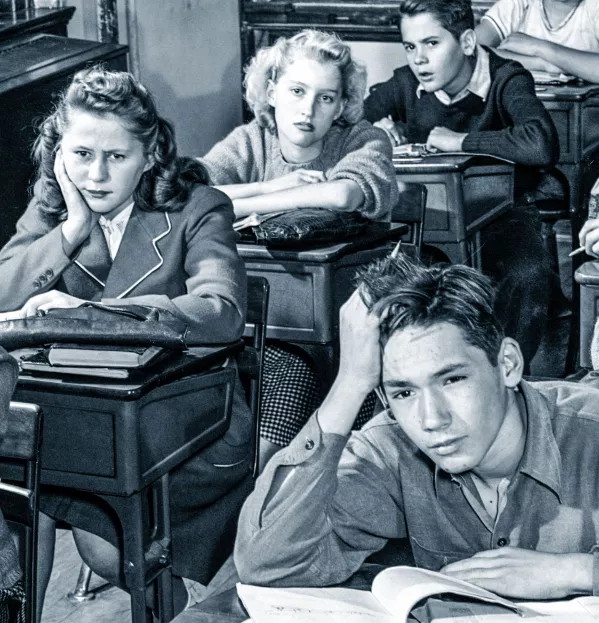- Home
- Teaching & Learning
- Secondary
- 3 common behaviour problems, and how to fix them
3 common behaviour problems, and how to fix them

There’s usually a behaviour “honeymoon” at the start of term. Teachers have been re-energised by the summer holidays, and the vast majority of pupils want to learn.
But then November comes. It’s at this point that the honeymoon period can begin to wane.
Suddenly pupils who were fine in September no longer behave for you.
Here are three common behaviour scenarios that you may encounter at this time of year, and what to do about them.
Behaviour in schools: 3 common situations
Scenario one: the disengaged learner
This pupil isn’t actively seeking to disrupt your lessons but has become disengaged from learning in recent weeks. They aren’t putting pen to paper and aren’t focused on what they’re doing. While they might not be causing disruption to others, their own learning is clearly suffering.
So, what should you do about it?
Start by speaking to the pupil to find out the reason for their disengagement. It could simply be boredom, but it might also be something more deep-rooted, such as a problem at home.
If you discover that there is an issue that needs attention beyond the classroom, follow your school’s safeguarding procedures. Seek support from a member of the pastoral team, or, if necessary, a designated safeguarding lead (DSL).
If there is no obvious underlying pastoral cause, and the pupil is simply bored or flatly refusing to engage, discuss this with them, but make it clear that boredom does not excuse a lack of engagement.
I would also call home and discuss the matter with parents, ideally with the pupil and a more senior member of staff present.
Ultimately, it’s important to tackle this issue quickly so you don’t allow it to escalate.
Scenario two: the new group
Due to long-term staff absence, your timetable has changed and you’ve picked up a new class with a reputation for being “challenging”.
In this situation, start by gathering as much information as you can from teachers who have taught the group before, and from your school management information system (MIS). Who are the key players? Why do they not behave? Who has an education, health and care plan?
Read more:
- Behaviour: Why “line-ups” have improved my mornings
- Is your school really trauma-informed?
- Back-to-school behaviour: how to start strong
With this intelligence in mind, come up with three or four key classroom management strategies that you think are likely to work with these pupils, and plan in advance how you will use them. For example, I would write micro-scripts for each strategy and rehearse these until they feel habitual.
Once you’re prepared, you need to put the group’s reputation aside and approach them as you would any other group. Communicate your expectations with positivity and kindness, but be explicitly clear about what you want.
Scenario three: the ‘nightmare’ class
You have one particular class that causes you to panic. This class has become more difficult in recent weeks, with pupils answering you back and growing increasingly rude.
This is taking its toll on you, and the class is becoming a group that you no longer enjoy teaching.
First and foremost, never allow rudeness. While it might be appropriate to ignore, tactically, a comment mid-lesson, do not allow that pupil to leave your classroom without you following up on their behaviour.
You then need to reassert yourself with the whole class. Plan to do this in your next lesson.
If at all possible, have the room laid out with all of your resources ready, a seating plan with name tags on the desks, and a clear starter activity on the board for the pupils to complete. I appreciate this could be a challenge if you are a nomadic teacher travelling the school, but if you can make it happen, it will really help.
At the start of the lesson, get the class to line up outside the room in silence and in single file. Then invite them into the room one at a time. Warmly welcome them, but tell them they must enter in silence and complete the work on the board in silence. Do not allow any pupil into the room until they adhere to these expectations, using your school’s behaviour sanctions if necessary.
Once the last pupil has entered the room, give the class a clear time frame outlining how long they have on the task at hand. Once this time has elapsed, insist on pens being down and ask everyone to look at you.
Now is the time to explain in a calm, clear, polite, kind but assertive manner that you have been unhappy with the behaviour and rudeness in your lessons. Explain why this is not appropriate and what the sanctions will be if a pupil crosses the line.
The challenge, then, is to follow through on what you have said, should any pupil seek to test the waters.
Sam Strickland is principal of The Duston School in Northampton. His new book, They don’t behave for me: 50 classroom behaviour scenarios to support teachers, is out now
You need a Tes subscription to read this article
Subscribe now to read this article and get other subscriber-only content:
- Unlimited access to all Tes magazine content
- Exclusive subscriber-only stories
- Award-winning email newsletters
Already a subscriber? Log in
You need a subscription to read this article
Subscribe now to read this article and get other subscriber-only content, including:
- Unlimited access to all Tes magazine content
- Exclusive subscriber-only stories
- Award-winning email newsletters



